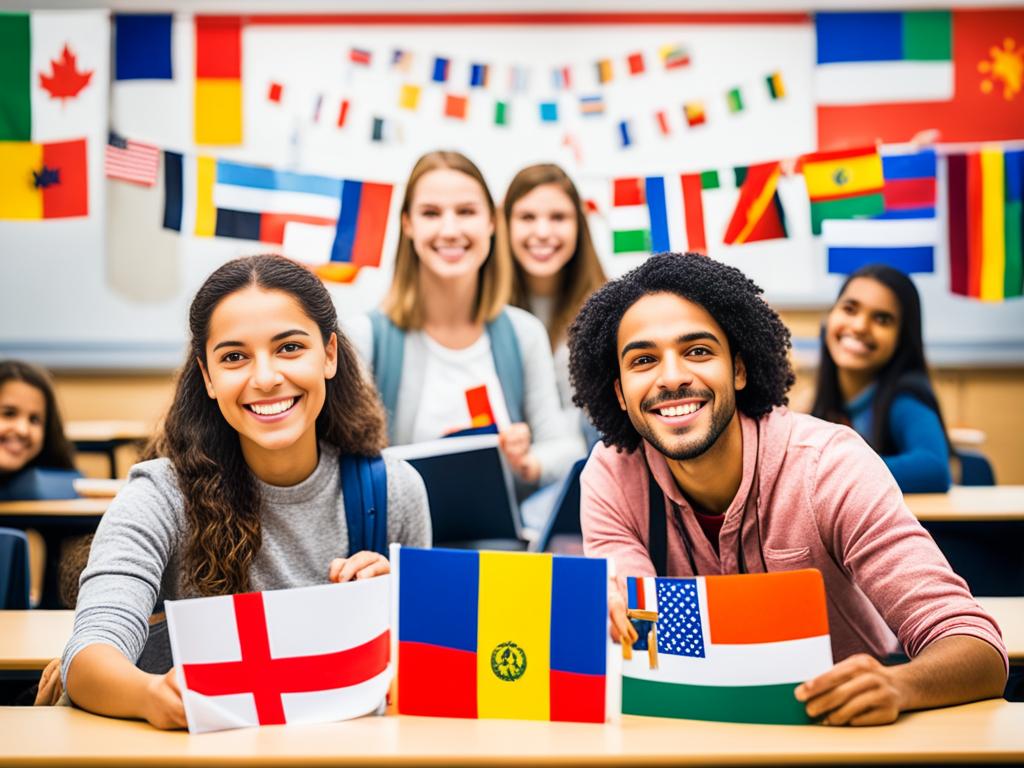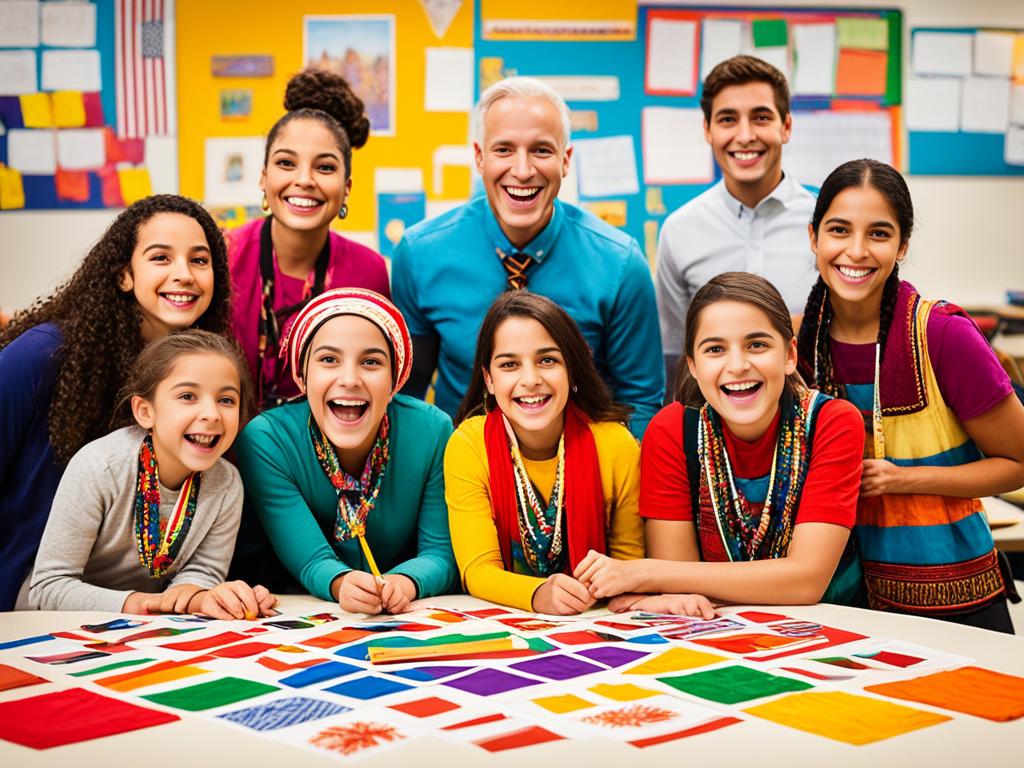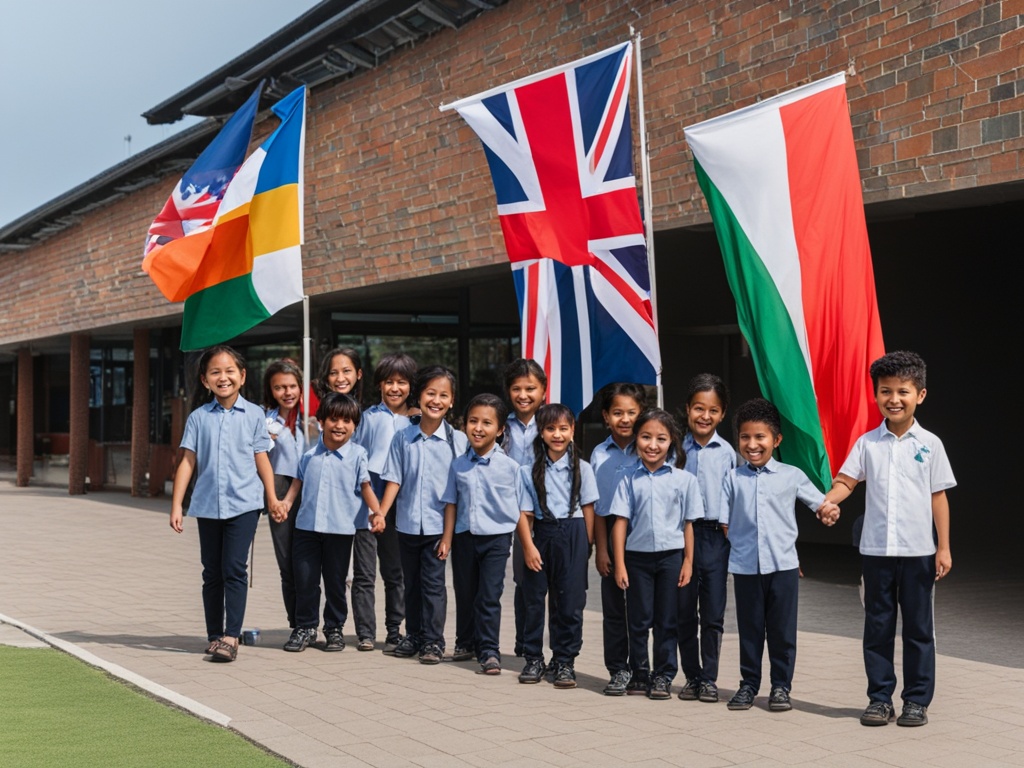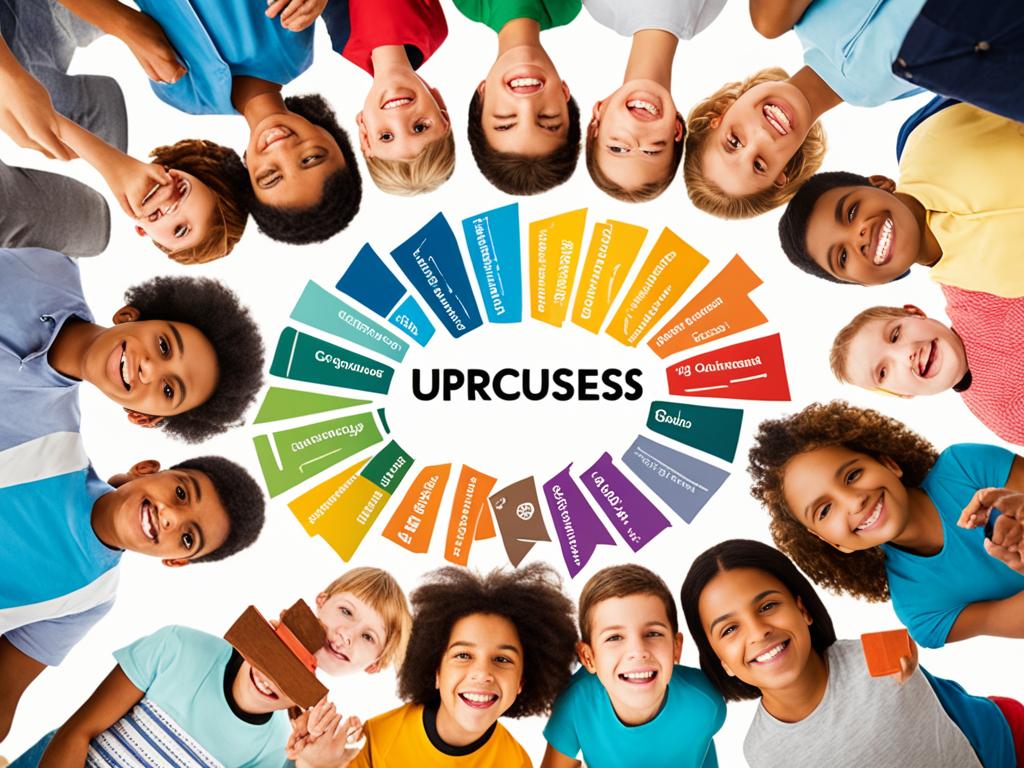
Cultural Diversity in Education
In today’s world, cultural diversity in schools is key. Our classrooms are getting more diverse. It’s important to celebrate the unique cultures of our students. This helps with understanding different cultures, being aware of the world, and making schools inclusive.
Cultural diversity means all the different traditions, beliefs, languages, and experiences we have in the world. In schools, it shows up in the backgrounds and views of each student. It’s not just about fairness. It’s also about getting students ready for the world today.

Teachers can make schools where everyone feels important and valued. When students share their cultures, they do better in school. They also get better at thinking critically and solving problems. These skills are key for doing well in today’s fast-changing world.
Understanding Cultural Diversity in the Classroom
It is key in today’s classrooms. It means the mix of different cultures, like ethnicity, language, religion, customs, and values, among students. It’s crucial to value these differences to make learning welcoming and rich for everyone.
Defining Cultural Diversity
It is about the unique backgrounds and identities students bring to class. It includes their views, traditions, and how they talk and interact. Getting to know and accept this cultural diversity helps improve intercultural communication and cultural competence for students and teachers.
Recognizing the Importance of Cultural Diversity
- Encourages cultural sensitivity and respect for different backgrounds and experiences
- Provides chances for students to learn from and about each other’s cultural diversity
- Makes the learning space more inclusive and fair
- Prepares students for a world that’s more diverse and global
By valuing and celebrating cultural diversity in class, teachers help students feel they belong. This lets students share their unique views, making learning better for all.

Benefits of Cultural Diversity in Education
Bringing cultural diversity into schools has many benefits. It helps students, teachers, and the whole school community. It makes students better prepared for a world where different cultures meet.
One big plus is how it helps students understand each other’s cultures. When students from different backgrounds work together, they learn to value different views and traditions. This helps break down wrong ideas and makes everyone feel welcome.
Being around different cultures also makes students more aware of the world. They learn about traditions and ways of life from around the globe. This prepares them for a job market and a world that’s more connected.
Also, it makes students better at talking with people from other cultures. They learn to overcome language barriers and adjust how they communicate. These skills are key for working together, solving problems, and leading in a diverse world.

By valuing cultural diversity, schools create a place where everyone feels respected. They help students get ready for a global future by teaching them to understand and appreciate different cultures.
Challenges and Barriers to Cultural Diversity
Promoting cultural diversity in schools is a great goal, but it faces many challenges. Stereotypes and prejudices are big obstacles. They can make learning spaces less welcoming for everyone.
These biases can cause misunderstandings and discrimination. They also make it hard to see the value in diversity.
Another big challenge is language and communication barriers. When students speak different languages, it can make teaching and learning tough. It can make it hard for students and teachers to understand each other.
Stereotypes and Prejudices
Stereotypes and prejudices are common in our society. They can show up in school too. Stereotypes make assumptions about a student’s skills or behavior because of their culture. Prejudices can lead to unfair treatment or leaving someone out.
To beat these biases, we need to work hard. We must teach cultural awareness, empathy, and how to question our beliefs.
Language and Communication Barriers
In diverse classrooms, language barriers can be a big problem. Students might not speak the main classroom language well. This can stop them from joining in class, understanding lessons, or sharing their thoughts.
Communication barriers can also happen because of different cultural ways of talking. This can cause confusion and frustration.

It’s important to tackle these issues. We need to make schools welcoming and fair for everyone. This way, all students can do their best and feel valued.
Strategies for Promoting Cultural Diversity
Making education more diverse is key to a welcoming and enriching classroom. Teachers can use strategies for promoting cultural diversity. These include teaching in a way that respects different cultures and making sure the curriculum and materials are diverse.
Culturally Responsive Teaching
Culturally responsive teaching means changing how we teach to match the students’ cultural backgrounds. It means understanding and valuing each student’s unique experiences and ways of learning. By doing this, students connect better with what they’re learning.
This method can include using cultural examples, teaching with diverse books and media, and adapting teaching styles for different cultures.
Inclusive Curriculum and Materials
Creating an inclusive curriculum and using diverse materials is also important. This means the lessons and resources in class show a wide range of cultures and viewpoints. By doing this, students learn to appreciate the beauty of different cultures.
By using these strategies for promoting cultural diversity, teachers can make classrooms where everyone’s culture is valued. This leads to a more fair and open learning environment for all.

Cultural Diversity: A Pathway to Student Success
Embracing cultural diversity in schools is key to unlocking students’ true potential. It’s not just a nice thing to do. It’s essential for students to do well.
When schools welcome all cultures, students do better. They feel they belong and can share their unique views. This makes them more likely to do well in school.

Also, schools that value diversity prepare students for the world. They learn to talk to people from different cultures and understand the world better. This helps them grow into global citizens.
The impact of cultural diversity in schools is huge. It helps students succeed not just in school, but in life too. By being inclusive, schools help students reach their full potential.
- Empowers students to develop a strong sense of belonging
- Fosters academic excellence and active engagement
- Equips students with essential cross-cultural skills
- Prepares students for success in a globalized world
Conclusion
Cultural diversity in education is very important. It opens doors to personal growth, academic success, and social peace. By welcoming different cultures in our classrooms, we help students grow and learn better.
Teachers can make the most of cultural diversity by using inclusive methods. This means teaching in ways that respect all students’ backgrounds. It also means using a wide range of materials and lessons. This approach helps students see the value in their differences and prepares them for a global world.
We need to make sure schools and leaders focus on cultural diversity. By doing this, every student, no matter where they come from, can do well. Embracing cultural diversity makes our schools better and helps build a fairer future for everyone.
FAQ
What is cultural diversity in education?
It means students from different backgrounds. This includes their ethnicity, language, religion, customs, and values. It’s about valuing these differences to make learning welcoming for everyone.
Why is cultural diversity important in the classroom?
It’s key because it helps students understand different cultures. It makes them more aware of the world. And it prepares them for a global future.
What are the challenges of promoting cultural diversity in education?
Challenges include stereotypes, prejudices, language barriers, and communication issues. These can make learning hard for everyone.
How can teachers implement culturally responsive teaching?
Teachers can adapt their teaching to fit students’ diverse backgrounds. This means creating a curriculum that includes many cultures and views.
How does cultural diversity contribute to student success?
Cultural diversity helps students feel they belong. It gives them the skills and knowledge to succeed in a diverse world.


